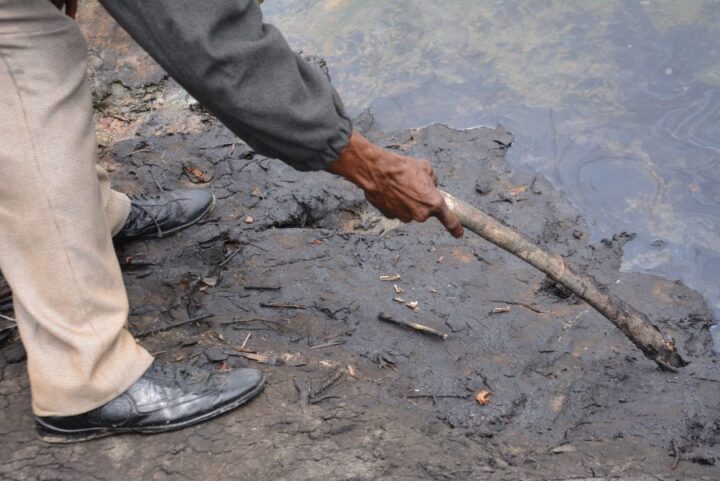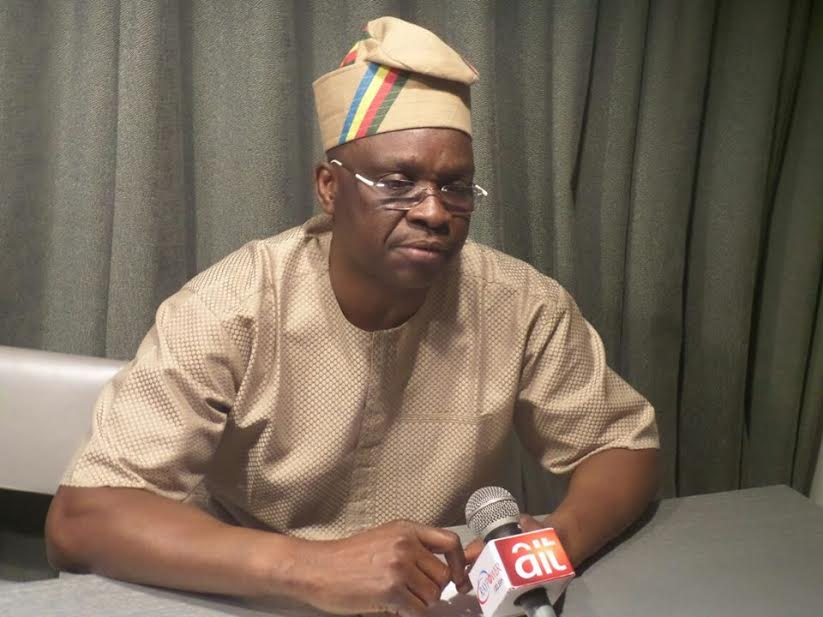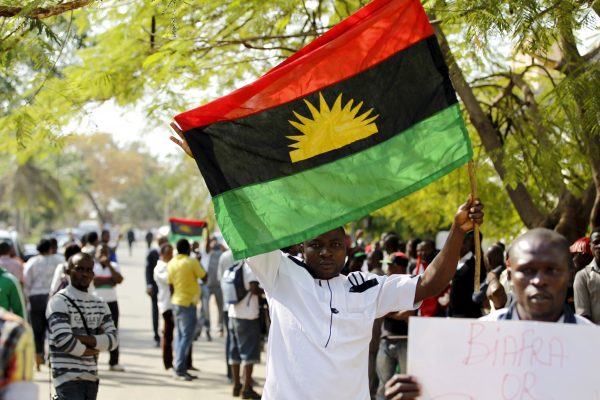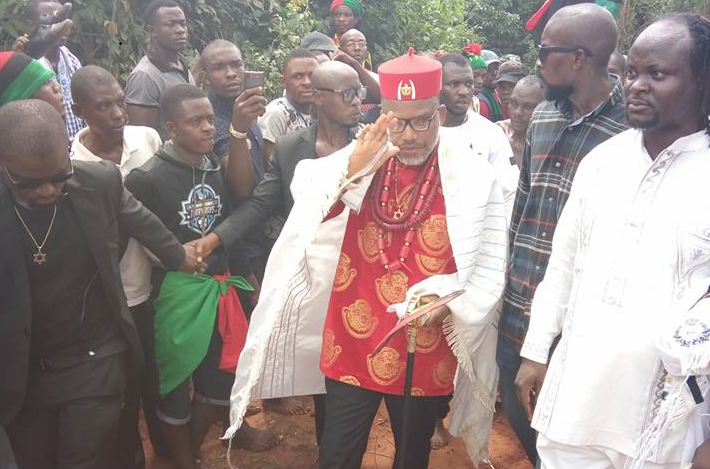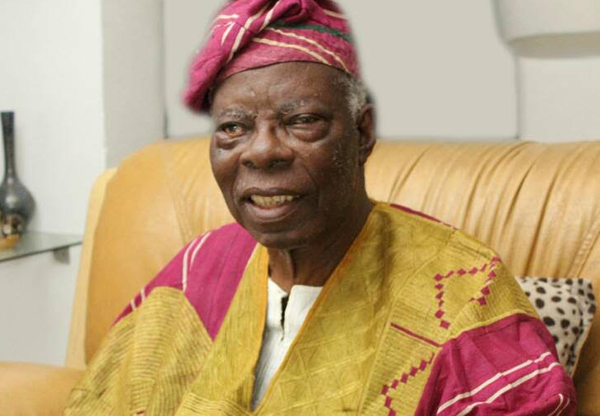BY ABRAHAM EKPERUSI
Since the emergence of civilian rule in 1999, every administration has been faced with the burning issue of the Niger Delta struggle for resource control and the environmental degradation affecting the region. Most paramount was the case of the Ogoni people.
Although, the government of Olusegun Obansanjo did initiate some groundwork by setting up a presidential initiative for the environmental issues in the Niger Delta, it was the administration of Yaradua/Goodluck that gave United Nations Environment Programme (UNEP) the go-ahead to conduct an environmental assessment of Ogoni land in 2009. After 14 months study in over 200 locations and analysis of over 4000 samples, the initials findings were enmeshed in controversy, attributed to some highly placed interest, until UNEP acted fast to save the day. Many viewed the final report as a watered down version of the true situation of things, all the same, there is a report and the findings were detailed enough to describe the deplorable situation of the environmental degradation of Ogoniland. Despite UNEP appeal for swift and emergency intervention in some areas like NsisiOken with critical negative impact on local people, it took the administration of President Buhari following his campaign promises to the Ogonis to finally summon the political will and courage to initiate the cleanup process. That the present administration has shown the political will to implement the UNEP report is a welcome development, but the departure of Amina Mohammed, the proactive Minister of Environment who picked up a higher duty at the United Nations created a panic situation, since many feared that her departure will create a lacuna difficult to fill and slow the process, but government is a continuum and things have continued albeit, at a slow pace.
The creation of a new HYPREP under the supervision of the Federal Ministry of Environment, the establishment of a Governing Council, Board and the appointment of a Project Coordinator indicated some spirited efforts by government to tackle the situation of the cleanup. The challenges facing HYPREP for a successful cleanup and restoration of livelihood is enormous and the best thing concern citizens can do, is to give their candid and unsolicited advice, with the hope that it will help improve the plan and programme for the cleanup exercise. I have outlined some issues here for the benefit of HYPREP.
Transparency
Advertisement
In a programme that has attracted so much attention beyond the shores of Nigeria, it is expected that there will be transparency on the part of HYPREP in executing its programmes, but the case seems to be different. HYPREP has a website that is not visible to search engines and without regular updates about critical issues and activities at the organization. Also, the Federal Ministry of Environment does not list HYPREP as an agency, initiative or programme, other than a page regarding Ogoni cleanup exercise that is almost outdated. A programme as comprehensive as Ogoni cleanup needs more than a social networking site with a limit of 140 characters. As a concerned stakeholder, I decided to ask for the work plan and I was told that it is not available for public view, except I have to appeal. This is very strange and regrettable for a programme that needs public support and good will to succeed. It makes a mockery of the open government initiative of the federal government and it may give the wrong signal about the project. Transparency and accountability to the people must be the two fundamental working principles of HYPREP. HYPREP needs a website where information regarding the cleanup are fully updated and reactions got from concern public or stakeholders. This programme cannot succeed without having a competent communication team that will engage with the affected people and the public at large. HYPREP should see reactions and criticisms from stakeholders as effective instrument to help push and facilitate the process.
Regulatory Framework and Workplan
It is expected that HYPREP and the Ministry of Environment will draft a regulatory framework in collaboration or consultation with UNEP or experts with technical knowledge to give guidelines covering all aspect of the intervention programme. The framework should give general criteria and guidelines for the entire programme. There are myriads of questions that the framework needs to address. At what level of hydrocarbon remediation do we call a cleanup exercise a success? The framework must state the hydrocarbon permissible limit for the success of the remediation of the various component of the environment. The regulatory framework should indicate the benchmark for hydrocarbon remediation limit for water, land, groundwater, etc. At what point or level, do we declare a site fully remediated? What component of hydrocarbons are we focused on? It is universally acceptable that no one process can remove completely the complex mixture of compounds found in crude oil. While many components pose a threat to public health and the environment, others do not, while information about others are limited due to lack of information or lack of toxicological assessment. HYPREP must define components that are of critical concern for remediation. What is the monitoring and evaluation component of the intervention? How do we measure the progress and success of the programme? Without a regulatory framework, it will be difficult to guide the services of contractors or consultants in key areas regarding the cleanup. These are issues HYPREP must clarify prior to rolling out the remediation plans. Such information should be made available to the general public especially the citizens of the delta.
Advertisement
Although, the UNEP report gave limited information on heavy metals, research by several scientists has established the fact that the Nigerian crude oil is laden with heavy metals above permissible limit. Toxic metals pose greater threat than most hydrocarbons, due to its toxicity, non-biodegradable properties and the potentials to accumulate in soil and taken up by plants where it can move though the food chain into tissues of humans causing severe damages. The remediation plan should consider heavy metals issues as well. After sorting out the framework, then HYPREP can produce workable yearly plan which will be approved by the appropriate authority and work to commence in earnest. It is expected that for the cleanup to gain momentum several services or programme had to be implemented concurrently or simultaneously.
Local Resources
There are calls from several quarters that the cleanup exercise should be done relying largely on local pool of talent and resources. This call was further buttressed when the United States Ambassador to Nigeria visited the Niger Delta region and HYPREP in June 2017. The call to use local talent and resources is very essential. Only services that are not available locally should be sourced from overseas. It is expected that HYPREP should call for scientists, researchers and industry experts to showcase their knowledge and technical expertise in order to handle the various component of the environmental cleanup. Universities, research institutions, independent researchers and scientists, industries with technical knowledge of environmental management especially related to oil cleanup should be given opportunity to demonstrate their capacity to execute the required services available. Successful firms should be given a temporary contract to demonstrate their capacity and groups or firms with outstanding result can then enter into a short/long term contract for their services. The regulatory framework should indicate the regular training and addition of locals or indigenes of the region into each executing firm for the cleanup. This will help build local capacity and create some form of employment for local people. Where highly technical skill are lacking in Nigeria, local firms should be able to collaborate with foreign firms with technical expertise in specific areas of the cleanup. The use of local researchers, scientists and industry experts has so many benefits. It will give many students, graduate and others opportunity to have a first-hand experience in the field besides the theoretical knowledge of environmental science or management. It will also help researchers and scientist to collaborate, build new research groups or units, create spin-offs from their research and add to the general competence and core skills of our academic programmes. For industry, it will lead to job creation and more employment opportunities.
The Exxon Valdez oil spill of March 1989 in Alaska, caused by the negligence of a drunken captain who was sleeping while on duty and a broken navigational system tested the resolved of the American government and the people in an accident whose magnitude has never occurred before. It took local fishermen (protecting their coastal farms and fishing grounds), Exxon and other oil industry players, researchers and scientist from government and research institutions spirited efforts to contain the spill, recover some certain amount of oil and achieve a considerable cleanup. The spill management over time bolster the scientific knowledge of environmental science researchers and students, gave rise to the establishment of new department in research institutions, new enterprises, new collaboration, etc. HYPREP need to encourage scientists and scholars that have demonstrated laboratory and field-based ecological solutions for environmental cleanup in order to develop local knowledge and expertise in Nigeria and the region. Also, from time to time HYPREP must publish the list of contractors or consultant and their approach, methods or scope of work. Where contractors default, they should be blacklisted and contract should be cancelled.
Advertisement
Water
It is sad that despite the awareness of the critical pollution level in Ogoniland, the people still uses the polluted water for their everyday activities. Water should be the first social services needed by the people. After the initial UNEP assessment, the defunct HYPREP, provided water using large tanks in strategic locations in Ogale community due to the critical level of pollution recorded in the report. The water was largely in short supply and was short-lived. The state government in partnership with Shell made some spirited efforts to rehabilitate the Eleme Water Supply Scheme popularly known as Water Works which is located in Ogale and presently under the management of RUWASSA. The ultra modern water facility at Ogale, pump, treat and distribute water but the water is grossly inadequate with poor channels to meet the needs of the people. There is need for HYPREP to collaborate with relevant institutions in order to build such type of system across various part of Ogoniland, to provide regular supply of water to the people. There should be a committee setup within the communities and the water managers in order to respond to issues of breakage, leak pipes and non-functional heads in order to avoid contamination and wastage along the channels. The people should be given awareness on the best practices to fetch, store and use water. It is commendable for HYPREP to collaborate with the Niger Delta River Basin Authority to provide water for the affected communities as long as the collaboration yields the desired result and output.
Security
Security will pose the greatest challenge to the cleanup especially considering the volatile nature of restive youth in the region. There should be a rapid assessment and appraisal of the security situation in order to map out the best possible approach to tackle the security situation. That the office of the National Security Adviser is working with HYPREP is not enough to guarantee security. Putting the core of the security on the hands of the people as local security team and vigilante task force, while their activities are supervised or regulated by a multi-security team made up of a Joint Taskforce, will achieve a better result.
Advertisement
Spillage
Apart from security, the second greatest challenge to the Ogoni cleanup is the incessant oil spill within the oil fields in the region from old pipelines and illegal bunkering. According to UNEP report, there are 116 oil wells, 5 five flow stations, 12 manifolds and over 122 km of pipeline rights of way. There is the need for HYPREP to collaborate with oil companies and local communities to map out the entire network of oil facilities and carry out a rapid assessment of areas prone to corrosion and leakage and find away to stop it. It has been reported near NsisiOken, that a family was burnt to death because they were fetching refine products instead of water from a well dug inside their compound that is about 10 meters from a refined product pipeline. Another report indicated that illegal bunkerers outside the community knew when exactly the refinery is pumping diesel and knows the location to sabotage and collect refine products despite the fact that there is a military outpost along the same pipeline. Areas prone to an accidental spill or illegal bunkering should be map out and methods to stop spills should be identified. There should be in place a rapid response team or task force made up of local people, NOSDRA, oil operators, with responsibility to tackle spills irrespective of the cause while the programme is ongoing. This will help avoid compounding the cleanup process and makes it more complicated for cleanup experts.
Advertisement
Imported Chemicals and Foreign Species
Although, the scale of the cleanup exercise will require many strategies and application for cleanup, the use of chemicals and foreign species especially microbe should be discouraged. Let me make it abundantly clear here, that there are several chemicals in the Nigerian market that are used by the oil industry operators and contractors for oil spill treatment that are largely toxic to aquatic and terrestrial life. This is not hearsay, but a fact. If such chemicals must be used, aside from complete disclosure of the constituent and safety issues, risk assessment should be carried out by independent experts or labs on their potential effects on local species before their application. Also, the importation of species of microbes may pose two problems; such microbes may not adjust well with indigenous species due to antagonistic effects, thereby slowing the cleanup exercise. Secondly, such imported species may thrive well and outcompete the local ones and thereby becoming invasive and pose greater danger to the environment. Research in Nigeria has shown that certain chemical concentration acceptable for environmental application in the western hemisphere were highly lethal to species found in the tropics especially Nigeria. The likely reasons may not be too clear but it not be unconnected with difference in environmental and climatic conditions. So the use of chemicals without laboratory pre-trials should be strongly discouraged. Lab trials should be carried out in standard independent laboratories with result accessible including full public disclosure.
Advertisement
The two most prominent chemicals used by Exxon and the United States Environmental Protection Agency for the Exxon Valdez cleanup, although judge to be successful to a certain degree, were controversial due to effects on the environment and public health. In a response letter from Richard Fairfax, Director, Office of Health Enforcement, Occupational Safety and Health Administration, dated January 23, 2001 to Richard Nagal on his request about the health effects of EAP22, one of the chemicals used for the 1989 Valdez cleanup, the Director partly stated “According to the MSDS (material safety data sheet) for EAP22, skin contact and inhalation are the primary routes of occupational exposure; it can be moderately toxic if absorbed through the skin, slightly toxic if inhaled, and can irritate the skin and eyes. High vapour concentrations may irritate the eyes and respiratory tract and may result in central nervous system (CNS) effects including headaches, dizziness, nausea, and drowsiness. Also, prolonged or repeated contact may remove natural oils from the skin, dry the skin, and cause irritation, redness, and rash“. When an MSDS provided by a manufacturer indicates these health issues, it is safe to conclude that there is more than meet the eye. We cannot clean the spill and create another complex problem for the future generations of Ogoni people, by using toxic chemicals and introducing invasive species.
Health Issues
Advertisement
HYPREP need to draw a collaborative framework for health partners. Aside from pollution remediation and restoration of livelihood, there is need to reset the health and quality of life of the Ogonis and the Niger Delta. Despite review of over 5000 medical records, UNEP indicated frustration at the poor health records in Ogoniland. An interaction with key players of the UNEP Health Assessment Team for Ogoniland clearly reveals the comatose situation of health records management in Ogoniland, which is almost the situation in the Niger Delta and other parts of the nation. This programme should create the opportunity for local health centres and hospitals to have a robust health information management system. Modern healthcare management relies on a credible information system for effective health care delivery. HYPREP should collaborate with international non-governmental organizations (INGOs) or development partners that can conduct rapid health assessment on prevailing disease conditions and provide medical advice and treatment on mobile clinics or renovation of local health centres. Areas of concern may include maternal and child health, reproductive health, cardiovascular diseases, neglected tropical diseases, etc. I’m very optimistic that there are several INGOs and other development partners that may be interested in this partnership for progress.
Health and Safety
The regulatory framework must include health and safety issues regarding everyone that will be involved in the clean up exercise. In a 2010 report by CNN, more than half of the over 11,000 workers that participated in the Exxon Valdez oil spill cleanup became sick, while other reports indicated over 50% died years after the cleanup exercise. Although Exxon refuted that claim, it is essential that a robust health and safety guidelines be put in place for contractors and consultants and every other workers that will be working directly or indirectly with contaminated or polluted environment in the course of the cleanup programme.
MOSOP
The Ogoni environmental assessment would not have been possible without the persistence and determination of the Ogoni struggle for survival. Now that the world has shown greater commitment than ever before to the Ogoni issues, the Movement for the Survival of Ogoni People (MOSOP) must rise up to the task. If the cleanup and restoration of Ogoniland fail, then the death of Kenule Saro-Wiwa and the many others who lost their lives would be in vane. This is the time to organize and strategizes in order to achieve maximum benefit for the people of the region. It is not enough to criticize the slow nature of the cleanup exercise but MOSOP must set a clear agenda in order to fully support and help expedite the process for the restoration of Ogoniland. Some of the roles MOSOP must play include;
Publicity
MOSOP should assist HYPREP and all other stakeholders in mobilizing the people to fully support the cleanup agenda. For this to work, political malice and intra or inter ethnic issues must be thrown to the back burner. There is need to mobilize the entire area for the programme to be successful. HYPREP must come with a plan to fully co-op the various groups such as social, religious, etc to mobilize their members to raise awareness of the people regarding the exercise. MOSOP should help further publicise every schedule and activities of HYPREP and gather inputs and opinions on the programmes and progress of the process.
Independent Review Panel
MOSOP should setup an independent review team or panel with experts from different fields cutting across environment, health, water, security, journalism, finance, etc. This expert panel should help to review independently the progress and process of the exercise and advise MOSOP how to interact with HYPREP and contractors in order to achieve the best sustainable outcome for the exercise. The team can have sub-team or taskforce to randomly visit and inspects items used by contractors or consultants for the remediation exercise and to conduct spot check without necessarily disturbing the work of contractors/consultants if they are using the approved methods for the cleanup exercise. When there are defaulters, such team should contact HYPREP and the relevant authorities without creating any situation of crisis. Also, the locals working with contractors and consultant should be educated to raise such issues. Where it is established after the necessary review that a contractor or consultant defaulted, they should be blacklisted and contract should be cancelled. This panel can also conduct independent assessment or review when a site is declared fully remediated by a contractor and HYPREP.
Security
Like earlier stated, security will pose an issue to the cleanup and government alone cannot guarantee security. In collaboration with HYPREP, MOSOP should setup strong security network where community members who understand the terrain will work round the clock to enhance security. If HYPREP cannot fund this project, MOSOP should look for funding in order to carry out their plans and programmes. God forbids, if this cleanup fail, MOSOP will share largely in the blame while other parts of the Niger Delta expecting cleanup may not see the light of the day.
Niger Delta
Ogoni is a fraction of the Niger Delta and the outcome of this programme will mirror what will likely happen to the other myriads issues of environmental degradation across the region. The success of this programme will help facilitate and improve the restoration programme for other polluted areas in the Niger Delta.
Ekperusi is an environmental consultant and currently a doctoral candidate at the World Bank African Centre of Excellence, Centre for Oilfield Chemicals Research (ACE-CEFOR), Institute of Petroleum Studies, University of Port Harcourt. He tweets @ekperusi_05
Views expressed by contributors are strictly personal and not of TheCable.
